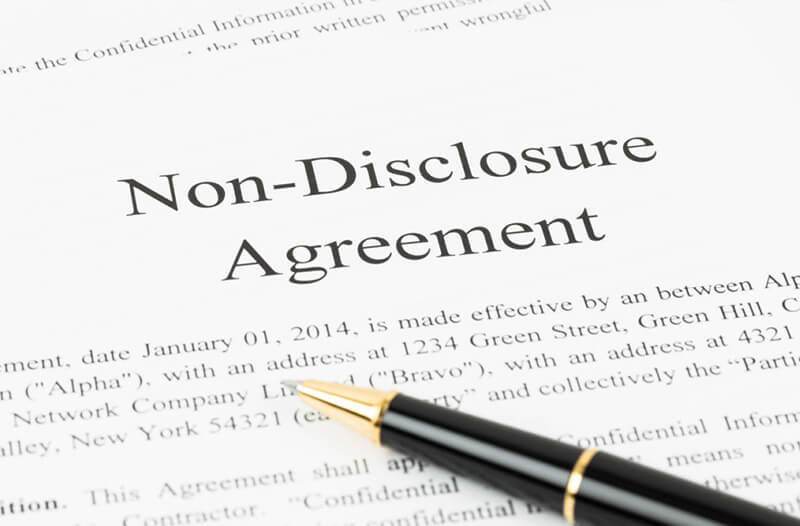What is an NDA?
While there are different forms of confidentiality agreements, a non-disclosure agreement (NDA) is a contract between two or more parties that contains a specific restriction on disclosure of certain confidential material or information to third parties. The information that is subject to an NDA is non-public, often proprietary, information concerning a company. NDAs create a confidential relationship between the parties, allowing them to share information without the fear of that information being disclosed to others. NDAs also allow parties to evaluate a potential business relationship (e.g., a merger, acquisition, or investment in a startup) in a confidential environment.
Why you need an NDA
The main reason for an NDA is to protect your “billion-dollar idea” from disclosure. You might want to protect a product design, a new service or software, a business plan, or some other information that makes your product unique on the market. However, there will come a time when you will need to share some of that information with others, such as when you are searching for investors. An NDA allows you to share your billion-dollar idea without fear of your idea later being misused or disclosed without your permission.
Types of NDAs
There are three types of NDAs: unilateral, bilateral and multilateral. Regardless of how many parties there are to an NDA, each party to the agreement will be designated as either a “disclosing” party and/or a “receiving” party. The disclosing party is the one who has information it will be sharing, and the receiving party is the one who receives the information and has the obligation not to disclose it.
Unilateral
A unilateral NDA, also called a “one-way NDA,” generally involves two parties, a disclosing party and a receiving party. There is generally a specific reason the disclosing party is seeking to implement an NDA, such as to protect intellectual property, trade secrets, marketing strategies, or other proprietary business information.
Bilateral
A bilateral NDA, also called a “two-way NDA” or “mutual NDA,” also involves two parties, but involves a scenario where each party plans to disclose confidential information to the other. Bilateral NDAs typically involve two companies who are considering some type of merger or joint venture (it should be noted that, when presented with a unilateral NDA, some parties may demand a bilateral NDA, primarily to encourage an NDA with more fair and balanced provisions).
Multilateral
A multilateral NDA involves three or more parties in which one or more of the parties disclose information to the other parties that requires protection from further disclosure. One advantage of a multilateral NDA is that it eliminates the need for multiple bilateral agreements between the parties.
Content
While there are numerous provisions one should consider when entering into an NDA, arguably the most important provision is to precisely spell out what information is confidential and cannot be disclosed. A good NDA will specify the confidential information by including a list of things that cannot be disclosed, including, but not limited to, unpublished, patentable products; copyrightable material; undisclosed trademarks or logos; financial information; marketing strategies; or customer lists. Often times the disclosing party will mark material as confidential, to help later establish that the receiving party knew the material was confidential, in case of a disagreement.
The second most important provision in an NDA is the time period that the information will remain confidential. This time period is typically between two and five years but can be longer. It is up to the parties to negotiate this term.
Other provisions that are common to NDAs include:
- Under what circumstances the receiving party can disclose the confidential information. NDAs often include a list of enumerated reasons for disclosure (e.g., in the event required by court order), which could also include notice requirements to the disclosing party.
- The obligation(s) of the receiving party regarding the confidential information. This generally includes how the receiving party is to maintain the confidential information and protect it from disclosure, including requiring any additional receiving parties to keep the information confidential as well.
- The exclusions to the confidentiality of the information. For example, NDAs will include exclusions for when the receiving party receives the same information from another source or when the information is generally available to the public (which can occur after the NDA was signed).
- What the receiving party is required to do with the confidential information at the termination of the NDA.
- The law covering the NDA and the parties. Jurisdiction, should any dispute arise, is also generally included in the NDA.
Before entering into negotiations for an NDA, you should consult with your attorney. This way, you can enter into the right NDA for you, including provisions that are beneficial to you and your idea. Making sure you protect your billion-dollar idea is almost as important as the idea itself.
